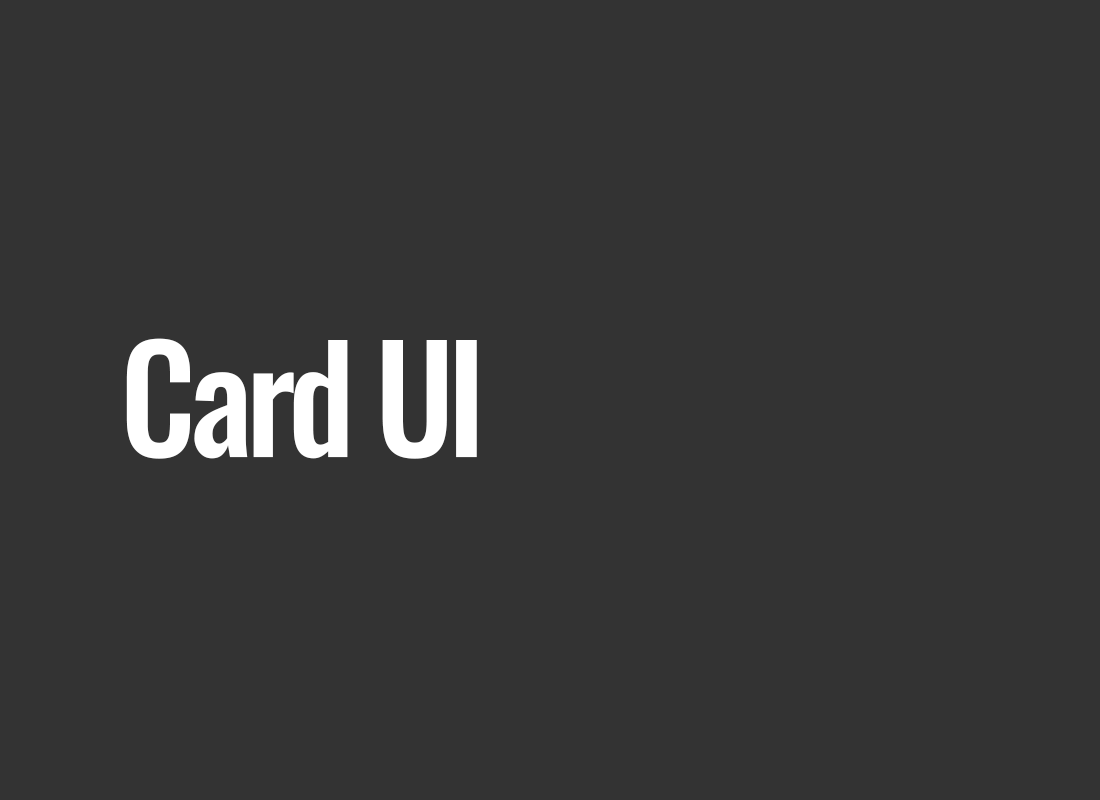Card UI
Card User Interface (Card UI) is an innovative approach in user interface design that has gained popularity in the digital industry, especially in the context of websites, mobile applications, and content management systems. The inspiration for this design style comes from physical cards, such as those used in games or libraries, which have long served as a means of effectively presenting and organizing information. In the digital world, Card UI transfers this concept to a virtual environment, offering users an intuitive and aesthetically pleasing way to interact with content.
Each "card" in Card UI is an independent container that can contain various elements, such as text, images, links, action buttons, or forms. This modular approach allows for easy segregation of content, which facilitates users in assimilating information. Cards can be designed in various styles and sizes, but they are usually characterized by clean lines, simple layouts, and often contain interactive elements such as buttons or links.
One of the main advantages of Card UI is its flexibility and adaptability. Cards can be easily customized to different types of content and screen formats, making them an ideal solution for responsive websites and mobile applications. This versatility makes Card UI a popular choice among UX/UI designers who strive to create clear, organized, and attractive user interfaces.
Moreover, Card UI promotes better user engagement. The clear and focused presentation of content on cards makes it easier for users to quickly find the information they are interested in. In the digital environment, where user attention is a valuable resource, Card UI offers an effective way to attract and maintain audience interest.
Flexibility and Functionality of Card UI
Card UI, being one of the most flexible and functional solutions in the field of user interface design, offers a wide range of adaptive and aesthetic possibilities. Its modular nature allows designers to create interfaces that are not only visually attractive but also highly functional and intuitive to use.
Modularity and Adaptability
The key feature of Card UI is its modularity. Cards can be easily customized and reorganized, allowing for the creation of personalized layouts that best meet the needs of users and the specifics of the content. This flexibility is particularly important in the context of responsive design, where the interface must be effective and aesthetically pleasing on various devices, from large computer screens to small smartphone screens.
Clarity and Transparency
Card UI promotes clarity and transparency in design. Each card is designed to focus attention on the most important content elements, while minimizing distracting and unnecessary information. This layout favors better understanding and assimilation of information by users, which is crucial in the fast pace of the modern digital world.
Interactivity and Engagement
Cards often contain interactive elements, such as action buttons, links, or forms. These interactive components not only facilitate navigation but also increase user engagement. By providing direct paths to interaction, Card UI encourages users to actively participate, which is particularly important in mobile applications and websites, where user engagement is a key indicator of success.
Aesthetics and Visual Appeal
The visual appeal of Card UI is invaluable. Well-designed cards can significantly improve the overall look and feel of the interface. Using images, appropriate colors, and fonts, as well as attention to visual consistency, makes the interface not only functional but also aesthetically pleasing.
Responsiveness and Accessibility
Card UI perfectly aligns with the principles of responsive and accessible design. Cards can be easily scaled and adapted to different screen sizes, providing a consistent experience across all devices. Moreover, well-designed Card UI can be easily adapted to the needs of users with various limitations, which is key in the context of creating accessible digital products.
Summary
Card UI, being one of the most versatile and user-centric approaches in the field of interface design, plays a key role in shaping digital experiences. Its ability to simplify complex information and present it in an accessible, aesthetically attractive way is of great significance in a world where information overload is a common problem. Users appreciate interfaces that are not only functional but also visually pleasing and easy to navigate. Card UI perfectly fits these needs, offering designers a tool that is both flexible and effective in engaging users. In the future, we can expect further innovations in this field, which will further strengthen the position of Card UI as a key element in designing interactive user experiences.
As digital technologies evolve, so will Card UI, adapting to new trends and user requirements. We can expect designers to explore new ways of using this concept, including advanced interactions such as touch gestures or integration with augmented and virtual reality. Additionally, increasing awareness of accessibility and inclusion in digital design will likely lead to further development of Card UI towards even greater universality and accessibility. As a result, Card UI will remain a key element in the UX/UI design ecosystem, continuing its role in creating more intuitive, engaging, and accessible digital environments.




